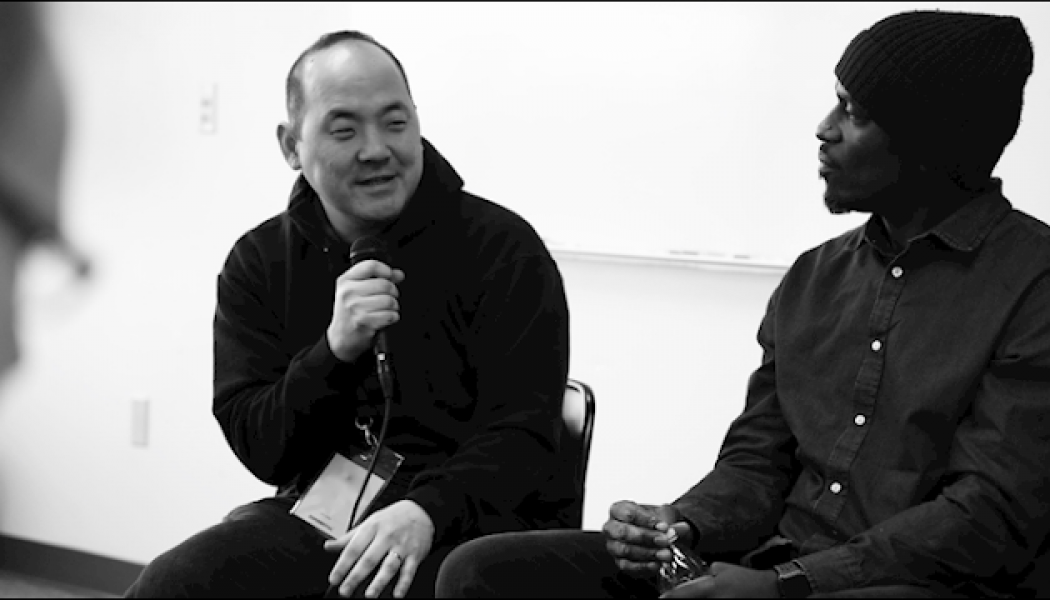An assessment of the Hispanic Church Planting Report reveals the necessity of training.
| Brendan Jones |
Earlier this year, the Send Institute at the Billy Graham Center commissioned a study on Hispanic Church Planting. It was a joint sponsored project between 12 denominations with an advisory team of 8 Hispanic church planting leaders. Members of the Church Planting Leadership Fellowship provided lists of new Hispanic church works, and LifeWay Research fielded the study.
Send Institute Director Daniel Yang provided an overview of what church planting organizations can learn from the survey. Then, Robert Guerrero shared on what we can learn about grit and faith. Today, Ramón Osorio, Ethnic Relations Director at the North American Mission Board, talks about why basic training is critical for church planters.
According to the Hispanic Church Planting Report, church planting basic training plays a major role when it comes to the number of new commitments to Jesus Christ in Hispanic congregations during the first four years of existence.
Typically, church plants grow when members from other churches transfer membership or when believers move to the area and are looking for a church.
While there is nothing inherently wrong with those methods of church growth, the goal of church planting is to expand the Kingdom of God through new believers who will also present the gospel to those who do not have a relationship with Christ.
Planters who received basic training in church planting prior to launching a new congregation saw more new commitments to Jesus than those who did not. Clearly, we have a case for investing time in church planters before they start working on the field.
One can argue that a church planter’s training should continue even after they have launched the church. From the survey, we see that regardless of the type and duration of the instruction, basic training positively impacts the success rate of church planters and the expansion of the kingdom, equipping planters to better understand essential factors in the church planting process.
This knowledge allows new churches to start healthier and be more evangelistic.
Any kind of training that church planters receive needs to establish the biblical foundations for the mission and the Christian character of the planter. Besides those key elements, basic training should address four main factors: calling, motivation, team development and leadership, and community exegesis and engagement.
First, when planters arrive at the basic training meeting, they have usually gone through a selection process, but it is always important to make sure they have a clear calling from God to church planting and to the area where they will serve.
Even though over 80 percent of church plants persist, two out of ten do not. One of the reasons church plants fail is a leader to whom God never asked to start a congregation in that specific place. God calls people to all sorts of ministry, but the type of challenges facing church planters require the planter and his family to be certain of God’s calling. This is the case for 76 percent of the Hispanic planters in the survey.
Second, planters should know their motivation for starting a new church before they move into the field.
Church planting is difficult, and at times the only reason to continue is the certainty of the calling and the conviction of pure motivation. Basic training should lead planters to discover and discard from their hearts wrong motivations like the lack of other ministry opportunities, the desire to ‘show them how it should be done,’ church splits, or other motivations similar to these.
Instead, in basic training, sending organizations must call planters to find their motivation in their love for God, their love for the lost, and their commitment to Christ’s mission of making disciples.
Third, basic training ought to equip church planters in how to form and lead multiplying teams with a missional DNA.
In the New Testament, we learned that the Apostle Paul planted churches in teams. From the survey, we learned that 62 percent of the planters started the work alone. With that, it is encouraging to see that 80 percent of pastors delegate key leadership roles to volunteers, and 75 percent of pastors provide leadership training to their church members.
This team-building approach becomes more important with bi-vocational or co-vocational planters because they need to share responsibilities in order to comply with family, work, and ministry demands. Another advantage of training planters in team leadership is that the congregation starts with a multiplying culture that will facilitate planting new churches in the short term.
Fourth, a successful church plant connects the right church model with the right outreach activities with the right community.
A poorly planned service with ESL classes as a major outreach in a highly educated niche of Hispanics will probably not get enough traction. In basic training, church planters should learn how to study the geography and demography of the area that God is calling them. This becomes more important when 69 percent of attendees live within twenty minutes of the gathering place.
This study of the community begins with collecting demographic data, learning the history of the city and region, and identifying the influential leaders. This information is usually available online or at the city’s office. A point to notice here is that only 41 percent of planters pursue meetings and interviews with area leaders to understand the community. Those who train planters ought to emphasize the importance of connecting with the power brokers in the community they serve.
But the exegesis of the community goes beyond online data.
Planters must know how to understand the culture of the community in general and of the different groups that compose it.
This is true even for first-generation Hispanic pastors because Hispanics in the United States come from different countries, diverse religious, social, educational, and economic backgrounds and, in addition, have adopted values and forms from the host nation and from other people in their immediate context.
With everything they learn from the community, planters will establish the vision, decide the model, and plan the strategy for the new church.
The fact that only 30 percent of the respondents indicated they received training that incorporated dynamics of the Latino/Hispanic context shows how much work we need to do in this area. The exegesis of the people where the church will start is vital, especially when only 35 percent of church plants selected the location because of those they are trying to reach. The rest of the church plants chose their place of gathering based on availability or convenience.
Finally, those in charge of training planters should emphasize that serving the community is not a tool to get people to know you or your church or one that you can use in the infant years of the congregation and abandon once they gather a good group of attendees.
Serving the community is a way of showing the love of God to our neighbors, regardless of their decision about the church or about Christ. The new church plant needs to think in terms of how to bless her community and motivate and teach the members to get involved. It is interesting to notice how 75 percent of adults serve in the church and only 25 percent serve in the community.
If we want to see church start-ups that grow through new commitments to Jesus Christ, mother churches, denominations, or sending networks must provide church planters with basic church planting training before they start planting. To be effective, that training needs to lead the planters towards self-awareness with regards to calling and motivation, equip the planter in working as a team catalyst and guide the planter in how to understand and connect with the community where the new church will flourish.
Written by RAMÓN OSORIO and was first published on Christianity Today








